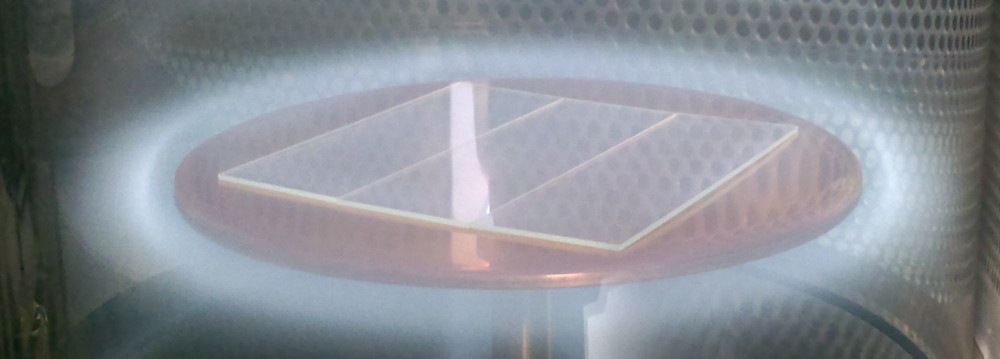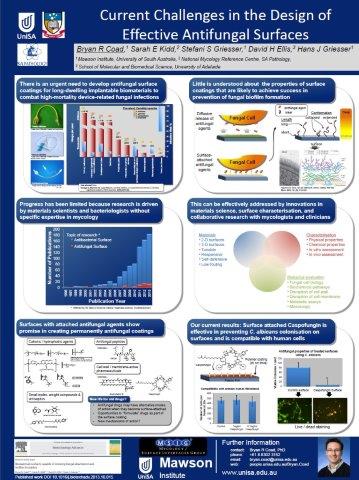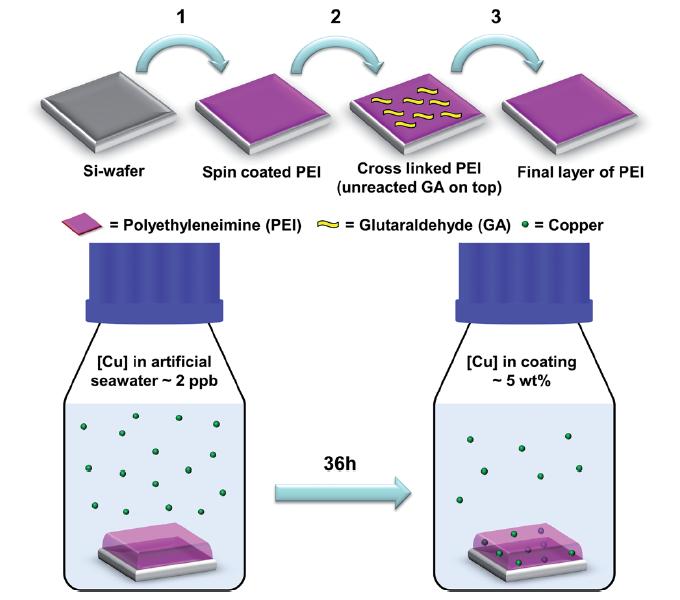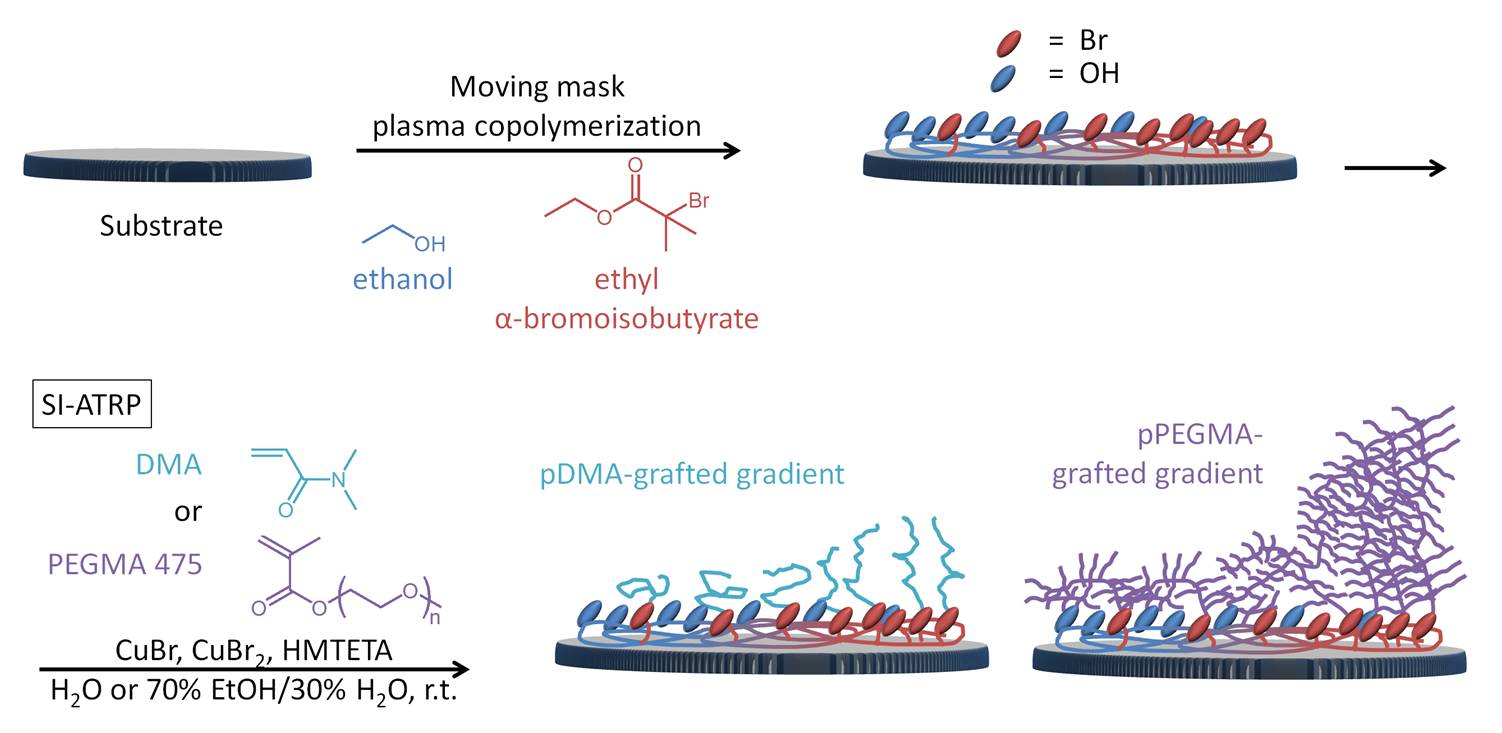We have just published another study on polymer brush gradients in Langmuir.
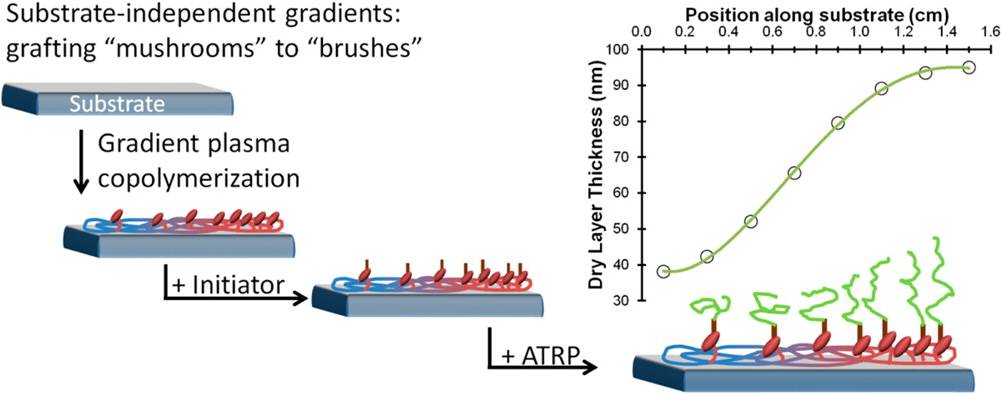
Published in: Bryan R. Coad; Tugba Bilgic; Harm-Anton Klok; Langmuir Article ASAP DOI: 10.1021/la501380m Copyright © 2014 American Chemical Society
This work describes a 3 step method for grafting polymer brushes from any substrate. Subsequent work (which happened to be accepted and published first) shows a 2 step method (see post here).
These two works show good understanding of different systems. First, two different plasma polymer gradients were fabricated based on octadiene/allylamine and ethanol/ethylisobromobutyrate, and polymer grafting was shown for hydroxyethyl methacrylate (HEMA), dimethyl acrylamide (DMA), and poly(ethyleneglycol) methacrylate (PEGMA). Last, we have show in this work gradient brushes grown from silicon wafers, and previously, from plastic coverslips.
I was especially pleased with this work as it gave me an opportunity to work with Prof. Harm-Anton Klok from EPFL in Switzerland. Prof. Klok’s work was an inspiration for me during my PhD and I am very glad to have the chance to work with him in a nice collaboration.
Many thanks goes to him and his student, Tugba Bilgic, for helping me with this work.
